Considered to be one of the most visited destinations in Metro Manila for this year, since its official public viewing on May 18, the National Museum of Natural History has continued to receive much attention on and off the internet. It can clearly be seen that a lot of thought has been put into the establishment and curation of this now very famous museum. Right off the bat, visitors of the museum would see how astonishing the details of the building itself are.
There are many reasons why a lot of Filipinos have suddenly become art enthusiasts after visiting the museum. The museum showcases various works that captures the eyes, minds and hearts of its visitors. Upon entering, visitors would immediately be welcomed by the DNA Tree of Life, a six storey high structure created by Dominic Galicia. This double-helix structure broadens near the roof, making it similar to leaves and branches extending in the canopy of the museum. The DNA Tree of Life is more than just a display, it also serves as an elevator to reach the different floors of the museum.
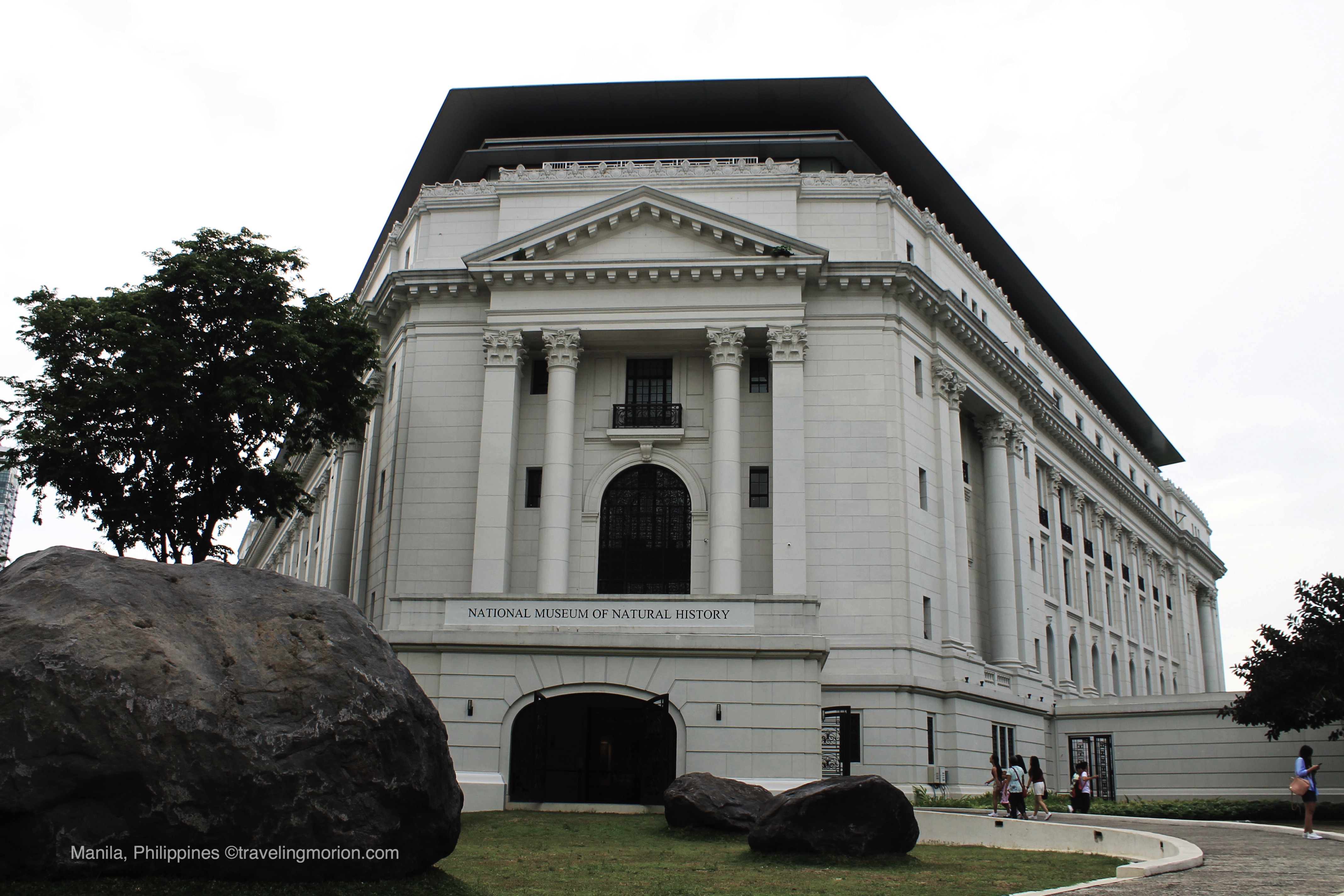 |
| Volcanic rocks from the Mt. Mayon at the museum's ground facing Kalaw Street and UN Avenue; this northern entrance serves as door and registration area for PWDs, senior citizens, pregnant and kids. |
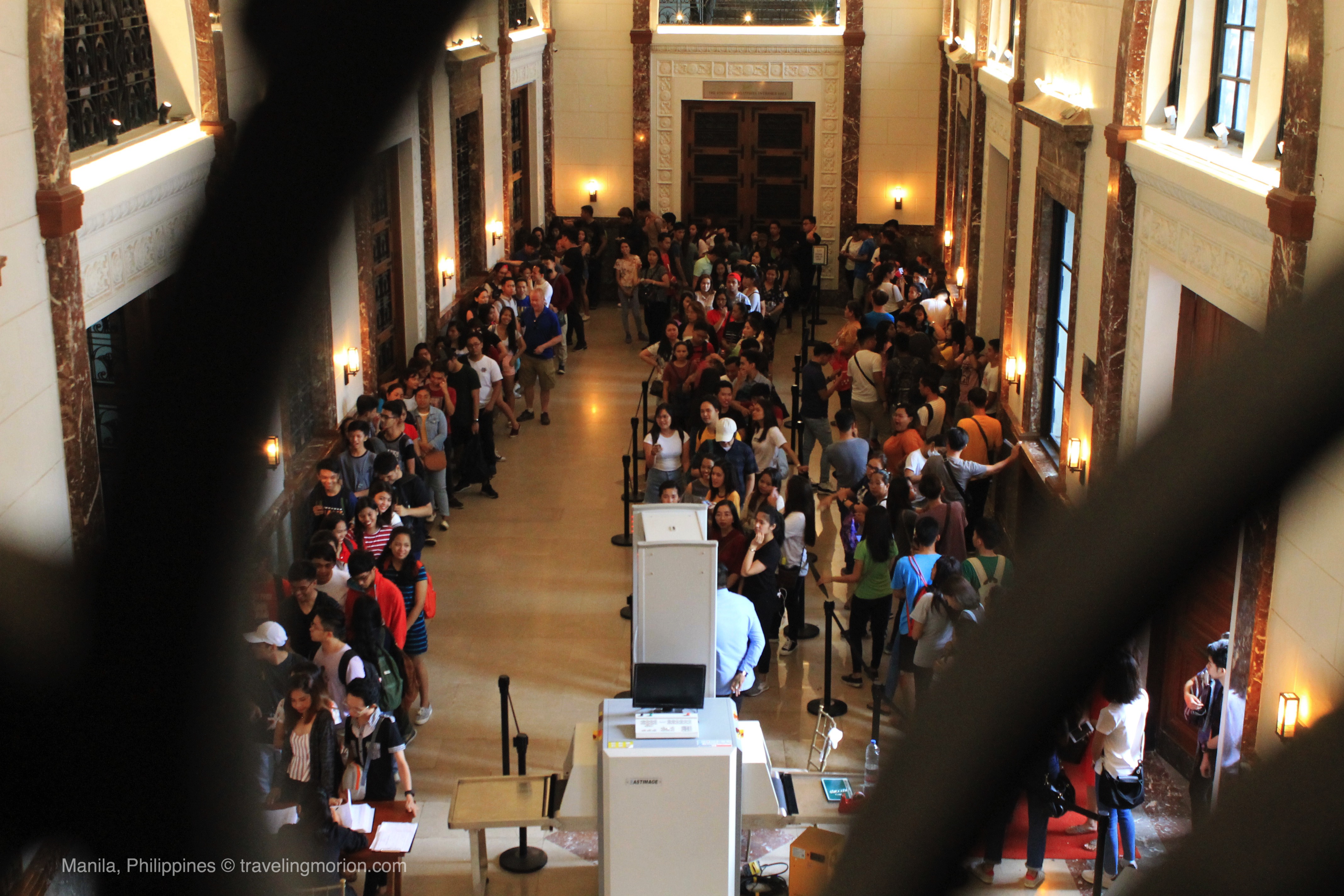 |
| A typical Sunday morning line at the National Museum of Natural History in Manila, Philippines |
 |
| The Tree of Life and the giant image of country's National Bird, the Philippines Eagle |
This is a good place to bring kids. Kids can learn more about animals in the Philippine wildlife. In the central hall of the museum, kids will immediately see the giant images of the three animals native to the country: Bohol’s Tarsier, Mindoro’s Tamaraw, and the Philippine eagle. A stuffed Philippine eagle is also displayed in the hallway of the museum. The Philippine eagle is considered as national symbol. One of the reasons is because of its size. Sadly, this impressive animal is in the endangered list due to high deforestation, plus other harmful human activities.
Additionally, there are other interesting displays; a lot of national treasures found within the museum that highlights the rich biodiversity of the Philippines. More than just the three previously mentioned animals our kids learn in school, they can also learn more about Lolong. This gigantic crocodile from Bunawan, Agusan del Sur was once the largest crocodile in captivity in the world. The skeleton of this gigantic creature is taken care of and displayed here. A Conus gloriamaris, a type of marine mollusk, measuring 179 mm is also one of the interesting displays in the museum. It was recognized with an exceptional size compared to a regular sized one - probably the largest sea cone shell (of its kind) not just in the country, but also in the world. Other than creatures of the water/sea, another interesting exhibit is the fossilized bones of a (butchered) Rhinoceros recently excavated in the northern part of Luzon - in the province of Kalinga. Yes, there were Rhinoceros found here in the Philippines 709,000 years ago!
 |
| Replica of Lolong from Bunawan, Agusan del Sur , declared as the world's largest crocodile in captivity |
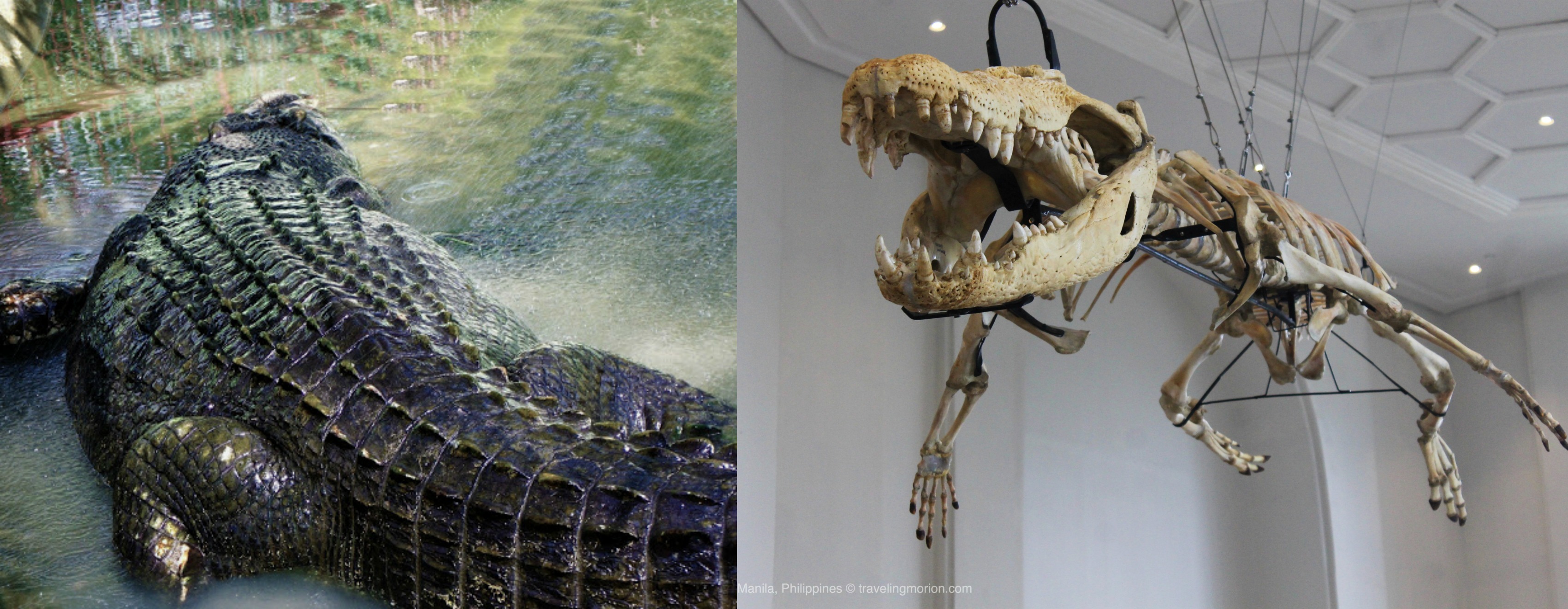 |
| LEFT PHOTO: Archive photo of Lolong in 2012 while at his cage in Agusan del Sur; RIGHT PHOTO: The skeletal remains of Lolong displayed at the Philippines' National Museum of Natural History |
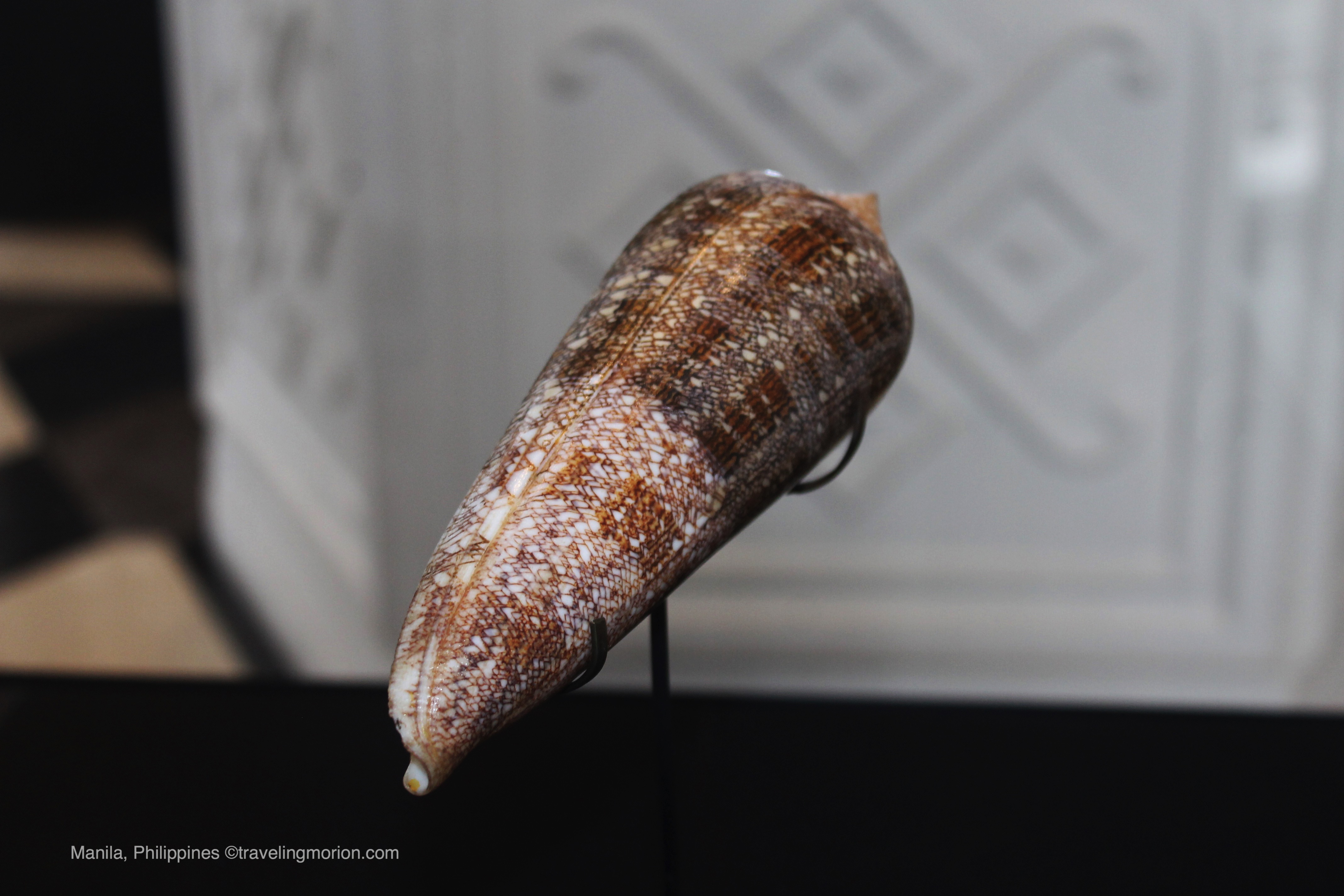 |
| Measuring 179mm, this Conus gloriamaris could be the world's largest |
 |
| Bones of butchered rhinoceros excavated in the northern part of Kalinga Province suggest humans lived in the Philippines as far back as 700,000 years ago. |
More than educational learnings on animals, visitors can also learn about pre-hispanic Manila. How? Would you believe that the now crowded, noisy and polluted Manila was once a large mangrove filled with White Nilad Flowers which had its natural dwellers (animals). The museum made a recreation of it. Through this recreated mangrove, maybe many would be encouraged to help Mother Earth in our own little ways.
The fun and learnings does not end there, there are a lot of galleries throughout the whole museum. For example, in Gallery IX, other than the Nilad Mangroves, beaches and interidal zones is shown here as well. For those who wish to explore the waters of the Philippines, Gallery X showcases the Marine Realm. This gallery has a submarine replica and as well as of the large creatures of the sea like the whale and the shark. And in Gallery XI, visitors can learn more about our natural inheritance. Displays of petrified wood can be seen here.
A little trivia about the museum: did you know that in less than a week since the opening, the museum received around 20,000 visitors already! Through the teaser photos that were posted months before the opening, a lot of Filipinos have looked forward to its opening. This just goes to show how we Filipinos are proud and support our own!
TRAVEL NOTES
- Entrance fee is FREE for all visitors, Filipino or foreigner.
- Operating hours: Tuesday-Sunday from 10:00AM to 5:00PM.
- Regular Entrance is at the main doors facing Rizal Park - registration is required.
- The door facing Kalaw Street and UN Avenue serves as entrance for PWDs, Senior Citizens, pregnant and kids.
HOW TO GET THERE
- If you're using public transportation, if you're coming from any lines of MRT or LRT 2, just find your way to LRT 1. Once you're in LRT 1, get down at United Nations Avenue Station, then in a few steps you'll see the museum.
- But if you're riding a car, just follow the route of LRT 1 till you find get to UN Ave. There is street parking available around the museum.
For more information, visit the National Museum of the Philippines Facebook page or call (02) 527-7889, or email cmvod.nationalmuseum@gmail.com.
_______________________________________________________________________________________________
Follow TRAVELING MORION's Journeys and Travels
Twitter| @travelingmorion
Facebook Page| Traveling Morion
Instagram | @travelingmorion


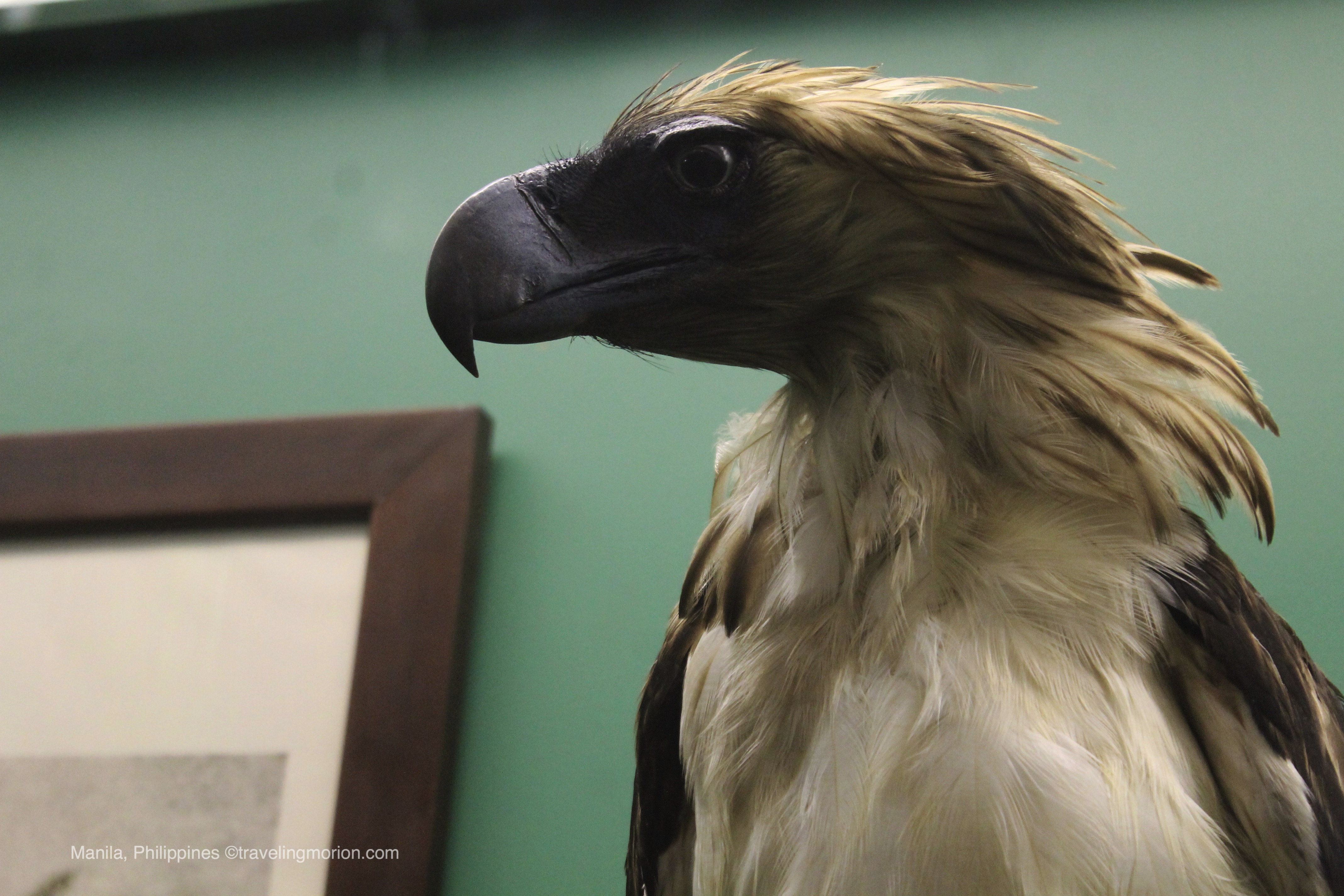
No comments:
Post a Comment
Thank you for visiting TravelingMorion.com
Feel Free to drop/leave comment/suggestion(s) here :)